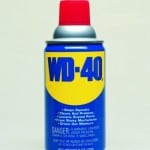Vertical Foundation Wall Cracks
A foundation is the structure on which a home or other building rests. It may be a simple trench filled with concrete on which the brick walls stand. It could also be a concrete-reinforced sheet under the entire building. Where the ground slopes, there may be foundation walls as well, to make up the height difference.
Where a basement is constructed beneath a dwelling, these foundation walls go up to full room height, and receive immense pressure from the weight above them. Unfortunately not all builders make good engineers. If the forces bearing down on foundation walls are incorrectly calculated – or they are inadequately supported by their footings – then the walls will inevitably crack. Cracks in the foundation can also be a result of shifting of the earth around the foundation, causing enough movement and stress for it to crack.

Warning Signs
Vertical foundation cracks usually develop during the first few years after construction finishes, as the building settles and the concrete finally cures. They typically start as hairline cracks that progressively open up. A structural engineer is able to measure their movement, and to determine whether the cracks are new developments, or older history.
It is also possible for basement wall cracks to develop when peripheral events affect an existing structure. These could include alterations to the property, blasting in the neighborhood, or even an earth tremor. It’s important to monitor for basement cracking during events like these, so that an insurance or other claim may be lodged before the opportunity expires.
Consequential Problems
Most times a mildly cracked foundation wall is more of an irritation, because it admits moisture and even drops of water through it. Nonetheless, homeowners are strongly advised to consult an a qualified contractor or engineer if in any doubt. The more serious consequence is often a reduction in the value of their home, since buyers often run a mile from the sight of cracks.
“Solutions” That Don’t Always Work
The only sure-fire way to seal a leak is at its source (unless it’s a hairline crack that may be filled with polyurethane). As a professional foundation contractor in Toronto, we get hundreds of calls a year for foundation cracks, including following up on poor attempts to fix them. The following are examples of botched jobs we often come across:
- Amateurish attempts like papering over basement wall cracks or filling them with commercial caulking seal. These are inevitably bound to fail as efflorescence builds up behind the sealant causing it to peel away. It’s also almost impossible to obtain a dirt-free, perfectly dry surface with which to bond.
- Commercial filling with hydraulic cement or other rigid substances is also bound to fail, because the structure will still shift with seasons, while the hydrostatic pressure from outside continues unabated. The same applies to epoxy seals to a lesser extent. They may sometimes work for years though – provided they are attached to a perfectly clean dry surface
Flexible, expandable urethane sealants may work where a crack has stabilised. However their elasticity is limited, while cracks can expand by up to 100% quite quickly. For this reason they are not ideal.
The Real Solution
Where vertical foundation wall cracks are serious, or there’s water pouring through them in the rainy season, the only viable solution is to remove the outside soil, to install a french drain or other soak-away system, and to apply a flexible waterproofing sealant or membrane from the outside.
Repairing and/or waterproofing a foundation can be expensive for the homeowner, it’s also alot of work. If you’re going to do it, be sure it’s being done by a professional that will offer a guarantee on their work and has experience working with foundations.











